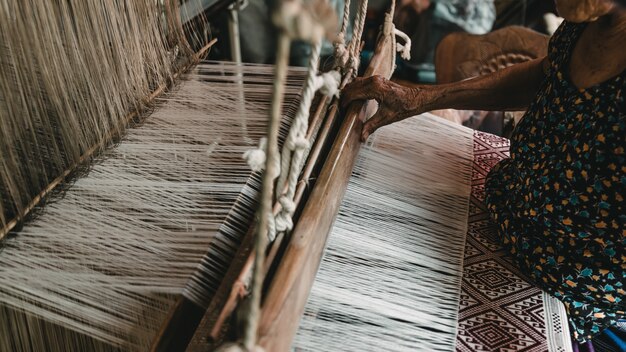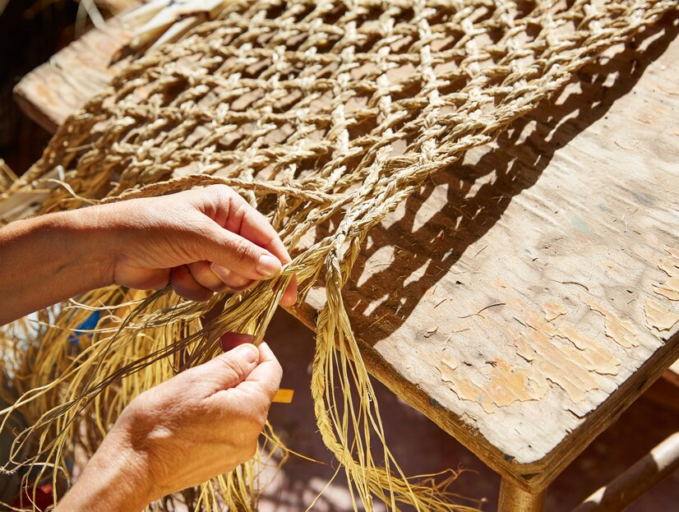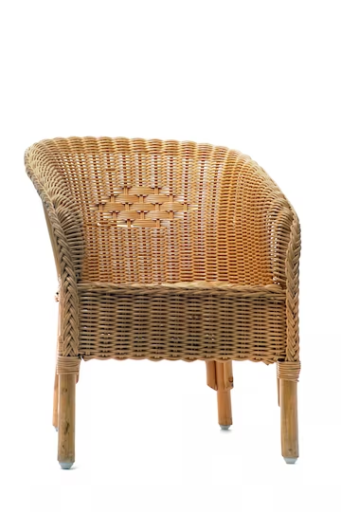The Art Of Making Wicker Furniture

Imagine strolling into your backyard, enjoying a cool iced tea, and exhaling as you settle into the comfort of intricately crafted wicker furniture. What if I told you that this artistic masterpiece was meticulously handwoven by artisans whose expertise has been refined through generations? Intrigued? Let’s explore the remarkable craftsmanship behind the creation of wicker furniture, seamlessly blending tradition with modernity to craft a timeless masterpiece for your patio.
Arguably the most appealing feature of wicker furniture lies in its visual aesthetics. The distinctive wicker weave is anything but subtle, instantly capturing the observer’s attention. Its chic contours enhance a space, redirecting focus from wall designs to the intricate patterns within the furniture.
Achieving such a look is no coincidence. Crafting wicker furniture is an intentional and labor-intensive undertaking, necessitating the expertise of a skilled artisan right from the outset. Choosing the appropriate materials marks just the initial phase in a series of steps crucial to the creation of wicker furniture.

The crafting of wicker furniture has been handed down through numerous generations, demanding patience, expertise, and a profound comprehension of the materials involved in its production. Initiating the process of wicker furniture creation involves the careful selection of materials and the processing of raw rattan. The following outlines the sequential steps in the making of wicker furniture:
Initially, the raw rattan material is sourced from the tropical forests of Southeast Asia, Africa, and South America. This pliable material possesses the flexibility to be bent and shaped into various forms required for diverse wicker weaving patterns.
Subsequently, the rattan fibers undergo a process known as deburring, where the sharp edges are removed while preserving innate qualities such as flexibility and strength. This preparation readies the rattan for the weaving process.
Following deburring, the rattan strands are immersed in water to soften them before weaving. Subsequent treatment is applied to prevent brittleness over time and to deter pests.
Upon completion of these stages, adept artisans employ their manual dexterity to weave diverse strands into a unified whole, employing various techniques collectively known as wicker weaving patterns. These techniques encompass under-and-over weaving (randing), double weaving, pairing, triple twist, and walking.

Weaving Techniques And Patterns
Wicker furniture is often characterized by its elaborate weaving patterns, contributing to a distinctive texture and visual allure. The following are some of the prevalent weaving techniques employed in the craft of wicker furniture making.
Under-and-Over Weaving (Randing): This simple weaving pattern involves taking a single strand and alternately weaving it over and under another strand, creating a unified piece.
Double Weaving: Utilizing two sets of strands—one atop the other—double weaving involves weaving both sets together on each pass, resulting in a denser weave compared to under-and-over weaving.
Pairing: Involving the splitting of strands in half and weaving them alongside each other, pairing produces a finer pattern suitable for decorative elements like borders or trim.
Waling: This technique entails weaving strands either vertically or horizontally around thicker pieces known as “ribs,” establishing a robust framework ideal for larger furniture pieces like chairs or sofas.
Triple Twist: Employing a triple weave pattern, triple twist enhances density in larger wicker furniture pieces. Three strands are woven simultaneously, creating a resilient yet flexible weave.
Conceptually akin to knitting or crochet, wicker weaving involves combining various threads or pieces to craft something novel and aesthetically pleasing. Just as the choice of colors or textures impacts a knitting project, selecting the right materials and weaves for your wicker piece can significantly influence the final product.

When individuals envision wicker furniture, they often picture a classic porch rocker or a comfortable sunroom set. However, the realm of wicker furniture extends beyond these traditional styles. Numerous modern furniture companies have harnessed the distinctive qualities of woven materials, applying them to contemporary designs or shapes that would be unattainable with conventional materials, such as metal.
The meticulous craftsmanship invested in each hand-woven piece serves as a distinctive selling point for many consumers who value an artisanal touch in their living spaces. While this may entail slightly longer lead times compared to machine-made pieces, the consumer’s appreciation for the effort invested in crafting their chair contributes to enduring customer satisfaction.

Materials Used In Wicker Furniture Production
The term “wicker” encompasses a range of materials, both natural and synthetic, that can be skillfully woven using handmade techniques to fashion various types of furniture. These materials are sourced globally and exhibit variations from one region to another. The selection of material is influenced by factors such as durability, strength, cost-effectiveness, and aesthetic appeal.
Natural materials like cane and rattan are predominantly utilized for indoor furniture due to their susceptibility to outdoor elements, necessitating protection. However, more robust alternatives such as bamboo and reed offer enhanced durability, making them suitable for prolonged outdoor use.
Increasingly popular among consumers seeking versatility and ease of maintenance are synthetic wickers made from resins like vinyl. Resin wicker proves resilient to high temperatures, making it well-suited for outdoor environments where other options might succumb to mold after prolonged exposure to rain. Vinyl/resin variations also provide added versatility with a broader spectrum of color options compared to naturally sourced alternatives.

Some might argue that mass-produced wicker furniture made using machines is just as good as handmade ones. While there is no doubt that machinery can produce good-quality furniture quickly, it lacks the soul and authenticity of handmade pieces. Handmade woven furniture showcases individuality rather than uniformity.
Think about coffee – would you prefer a perfectly brewed cup made by a skilled barista or an instant one from a machine? Similarly, handmade exquisite designs capture the beauty of imperfection found in nature while machine-made furniture can’t replicate that visual appeal and warm human touch.
